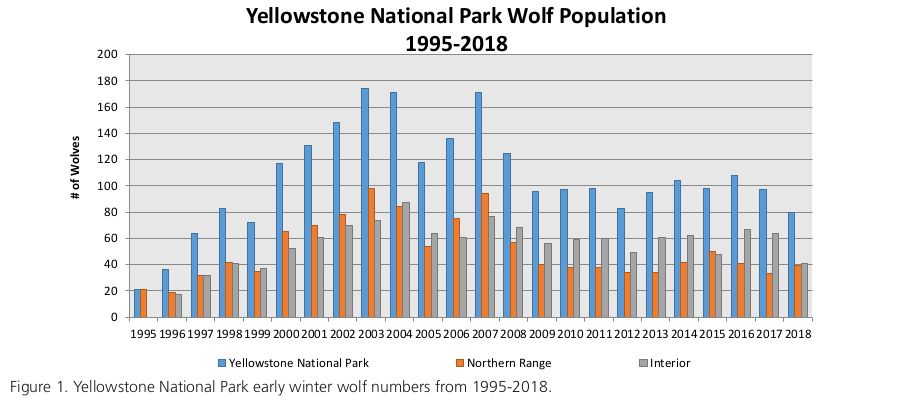Yellowstone wolves quarter-century after - shortly about territoriality
Almost a quarter of a century passed by since the first wolf individuals were released into the open park boundary, as the missing element in its natural ecosystem to be balanced, with a hope they would settle there permanently.
Yellowstone Wolf Project - the Yellowstone Forever contribution, which is the official nonprofit Yellowstone National Park partner - has been delivering its regular voluntary reports annually since 1995. Each of them includes collected data, dispersal and prey-predator relations study, exceptional observations, common conclusions.

Almost a quarter of a century passed by since the first wolf individuals were released into the open park boundary, as the missing element in its natural ecosystem to be balanced, with a hope they would settle there permanently.[1] Over the years, starting from 14 ones reintroduced to Yellowstone initially, constantly studied and monitored[2] wolf population has fluctuated, split up into the northern perimeter and the interior habitat. It counted 80 in 2018 - 9 wolf packs ranged from 3 to 19.
This is the first year since 1995 we recorded no intraspecific-caused mortality, which is usually the leading cause of natural mortality in the park.
First time in history of the wolf reintroduction to the Yellowstone no such accident was confirmed on the limited NPS area where the local wolf population remains divided into neighbouring or overlapping each other territories taken over by specific wolf packs. That territorial stalemate make them remain seemingly unconflicted.
Statistically, direct territorial conflict involving two different groups of inhabitants, is the second - right after human activity like culling, poaching, road collisions (cars) - wolf death cause. Wolf packs confront territorial behavior (intra-specifically) toward potential intruders (same species representatives) within inhabited - scent marked - regions. Those fights are silent - excluded vocalisation (warning signals elided) - determined by the number of adult males in a pack.
In nature, wolves migrate - through still unsettled (by wolf species) areas or between territories marked by other wolf residents. In principle, those are young, healthy individuals, satelliting outside to find a partner (mating season) and back to the family pack (inbred diversity aspect). As the result, local wolf population temporarily
– increases - thanks to wild outsiders coming inside
– decreases - because of local roamers venturing outside being hit by a car / shot by a hunter / trapped by a poacher (human activity again).
Overall, wolf numbers fluctuated little from 2009 to 2017 (83-108 wolves) but dropped slightly this year, particularly in the interior of Yellowstone.
Wolf pack's territory is set down in order to long-term food resources being optimally sufficient. It consists of
– inner part - randez-vous meeting place, where wolf family pack spends most of time (incl. wolf den)
– outer part - hunting area, where marked borders are patrolled and guarded by adult pack members.
More numerous potential prey population (in reference to overall area), less vast single pack's territory (and more chance to reside for other wolf packs). To sum up, if food resource amount is sufficient, neighbouring wolf packs share the same hunting area, even if their territories overlap with one another (each one containing its own randez-vous point). Competition rate correlates also to mutual inbred, especially regarding leading pairs in the neighbourhood.
Counting 80, Yellowstone population, which has declined regularly for last 5 years, reached its lowest number in history - circa half of the highest wolf numbers in early 2000's. According to Doug Smith, the Yellowstone Wolf Project leader, it's strictly related to the local elk population - almost 20000 in 1995 (when the Yellowstone wolf reintroduction was started), currently limited by Yellowstone wolves to safely numbered 6000-8000.
citations/references:
Yellowstone Wolf Project archive
Elli H. Radinger "The Wisdom of Wolves" (2019); reviewed
[1] Before that, captured and transported from Canada, obligatory placed in fenced enclosures and fed elk carcass to make them adapt to the diet.
[2] Each wolf pack within the Yellowstone park area counts at least one (leading male/female) pack member radio-collared. 7 wolf generations were researched so far.

